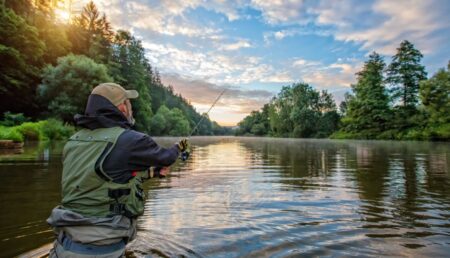
Hiking boots are an essential piece of equipment for anyone who loves to explore the outdoors. Whether you are a novice hiker or a seasoned pro, having the right pair of boots can make or break your outdoor experience. Hiking boots provide extra support, protection and traction on a variety of different terrains, making them an invaluable asset for outdoor adventurers. In this blog post, we will take a look at the different types of hiking boots and the purpose they serve.
Why Fit Matters
When it comes to hiking, having the right gear is essential. One of the most important pieces of equipment you’ll need is a pair of well-fitting hiking boots. But why exactly does fit matter?
First and foremost, a comfortable fit is important for your overall comfort as you hike. If your boots are too tight, your feet may become sore and you may experience blisters. If they’re too loose, your feet may slide around inside the boot, causing you to lose balance and possibly injuring yourself. A well-fitting boot will keep your feet in place and reduce friction, ensuring that you don’t get hurt.
Second, a well-fitting boot will provide you with better support. Poorly fitting boots may cause your feet to roll inward or outward, leading to ankle or knee injuries. A properly fitted boot will offer support to your ankles and arches, helping to reduce strain on your joints.
Third, having a well-fitting boot can improve your performance. If your boot is too loose, it can cause instability, making it more difficult for you to balance as you walk. On the other hand, if it’s too tight, it can restrict your movement, causing you to tire easily. A boot that fits correctly will keep your feet securely in place, allowing you to move more freely and with greater agility.
Finally, a well-fitting boot can make a huge difference when it comes to safety. A boot that fits correctly will provide more grip and traction on slippery surfaces, helping to prevent falls and keep you safe.
How to Measure Your Feet
Here’s a step-by-step guide on how to measure your feet:
- Find the right time to measure your feet. Be sure to measure your feet when you’re standing up, not sitting down. This will ensure that you get the most accurate measurement.
- Stand on a flat surface. If possible, stand on a hard surface like a piece of wood or tile. This will prevent your feet from sinking in and will help you get the most accurate measurement.
- Remove any socks or shoes that you’re wearing. This will ensure that you get the most accurate measurement.
- Place a piece of paper on the floor. Place the paper on the floor and stand on it with your heel and toes touching the paper.
- Measure the length of your foot. Using a measuring tape, measure from the back of your heel to your longest toe. Record the length of your foot in centimeters or inches.
- Measure the width of your foot. Place the measuring tape at the widest part of your foot and measure the width. Record the width of your foot in centimeters or inches.
- Determine your foot size. With your measurements in hand, you can now determine your foot size. For adults, you can use the US sizing chart. For children, you can use the international sizing chart.
How to Choose the Right Size
First, let’s take a look at the different size systems. Clothing sizes vary from country to country, so it’s important to pay attention to the size system of the country you’re buying from. For example, the United States uses the U.S. size system, while the U.K. uses the British size system.
Now that you know the different size systems, it’s time to measure yourself correctly. You’ll need a measuring tape, so make sure to get one if you don’t already have one. To measure your chest size, wrap the measuring tape around your chest at the widest part. To measure your waist size, wrap the tape around the narrowest part of your waist. To measure your hip size, wrap the tape around the widest part of your hip.
Once you’ve taken your measurements, it’s time to look at the size chart of the clothing you’re interested in. It’s important to note that size charts can vary from brand to brand, so make sure to pay attention to the specific chart for the clothing you’re looking at. Most size charts will have measurements for chest, waist, and hip sizes. Compare your measurements to the size chart to find the size that’s right for you.
If you’re still unsure which size to go for, it’s always a good idea to order two different sizes and return the one that doesn’t fit. This way, you can make sure you get the perfect fit.
How to Try On Hiking Boots
First, you want to make sure that you have the correct size. This can be done by measuring your feet and comparing it to the size chart of the boots you are looking at. If you are between sizes, it’s best to go up a size. This is because your feet will swell and expand while hiking, and you don’t want your boots to be too tight.
Second, you want to make sure that you have the right sock thickness. You may want to bring along both a thin and a thicker sock to try on with the boots. This will help you determine the level of comfort and the fit of the boots.
Third, you want to make sure that you have the right lacing and support system. Do the laces come down far enough? Are the laces tight enough and secure? Are there any extra straps that you can use for extra support? All of these factors will help you determine the best fit for your needs.
Fourth, you want to make sure that the boots are comfortable and supportive. When you are trying on the boots, walk around in them for a few minutes and get a feel for the support and cushioning. Make sure that you can easily move and that the boots don’t rub or pinch.
Finally, you want to make sure that you are standing in the proper posture while trying on the boots. Make sure that you are standing straight with your feet shoulder width apart, and your knees slightly bent. This will help ensure that you are getting the right fit.
By following these tips on how to properly try on hiking boots for the best fit, you should be able to find the perfect pair of boots for your next hiking adventure. Remember, the right fit is key, so make sure to take your time and get the best fit for your feet.
Additional Considerations
First, consider the fit. Hiking boots should feel snug, but not too tight. You should be able to move your toes freely and be able to wiggle them. Your feet should not feel cramped. Make sure the laces are tight enough to keep your feet secure but also allow for some movement.
Next, look for ankle support. Your hiking boots should provide some cushioning and support around the ankle area. This will help protect against ankle sprains, which can be very painful. Check for additional features such as arch support, padded insoles and heel cups.
Grip is also important. Look for boots with a good tread, so you can remain sure-footed while navigating trails. Grippy soles will also help you stay balanced on muddy, slippery or rocky terrain.
Finally, make sure the boots are waterproof. This will help keep your feet dry and comfortable, especially on wet and rainy days. Look for materials such as Gore-Tex, which is both waterproof and breathable.
These are some of the main considerations when buying a pair of hiking boots.
Conclusion
the key points to consider when buying hiking boots are to ensure the boots fit well, provide good ankle support, and are waterproof. Additionally, it is important to ensure you buy a boot that is appropriate for the type of terrain you will be hiking on. Finally, it is important to break in the boots before going on a long hike to ensure your feet are comfortable and no blisters occur. By following these tips, you can ensure that you have the best fit for your hiking boots.












